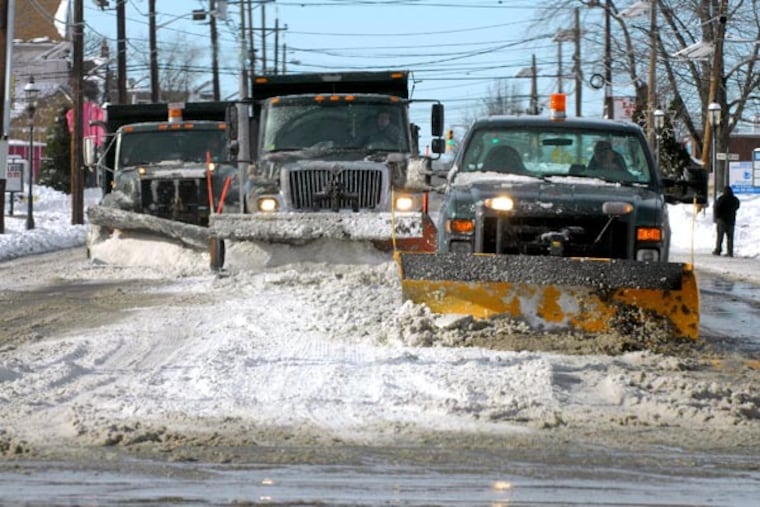Feds favor warm winter for Philly and much of the rest of the nation — with caveats
A number of wild cards are in play, including unusual sea-surface temperatures. TV's Glenn Schwartz is bullish on snow.

The atmosphere is holding its cards tightly, but federal meteorologists say the odds favor a mild December around Philadelphia and in much of the nation, with temperatures overall above long-term averages.
In a forecast update issued Thursday, the Climate Prediction Center also said chances were decent for above-average precipitation for the winter.
But as usual, a number of wild cards are in play, including unusual sea-surface temperatures and oscillating pressure patterns over the Atlantic and Pacific Oceans, the climate center’s Steve Baxter said at a morning briefing.
He also noted that after December, the forecast generally trends colder.
For a variety of reason, the climate center eschews predicting the variable that people tend to care about most — snow, which Philadelphia’s television meteorologists aren’t so gun-shy about.
Glenn Schwartz, the dean of local television meteorologists, isn’t. In his 23d annual winter outlook that aired Thursday night, he called for 30 to 35 inches of snow in Philadelphia this season; the average is just over 22.
In part, he based his forecast on the fact that this has been a lull period in the solar storms more commonly known as sunspots. Similar lull periods coincided with the snowiest winters on record in Philadelphia, 1995-96 and 2009-10.
Both Cecily Tynan’s at 6ABC and Kathy Orr of Fox 29 are on record as predicting something close to the region’s seasonal average for snowfall, about 22 inches.
Last winter was a rough one for the prognosticators, who generally saw significantly above-normal snowfall. The biggest snow of the year was a mere 3.6 inches, and that was in mid-November.
But meteorologists keep trying, and for its part, the climate center stays out of the snow mix.
Baxter said the federal forecasters are watching an unusual pattern in the Indian Ocean, which is quite warm in the east and cold in the west.
The Indian is the third-largest ocean, and covers almost 20% of the world’s surface. Since weather moves west to east, that could have some effect on the U.S. winter. But it isn’t clear what that effect might be.
They also noticed that temperatures have spiked in the tropical Pacific, a development usually associated with the widespread El Niño warming that can be a major factor in U.S. winters. But Baxter said that recent warming likely is a short-lived development.
On the other side of North America, one model that relies on statistical analysis sees the North Atlantic Oscillation index remaining in a phase that would favor snow and cold in the Northeast, the climate center said in its forecast discussion.
But that would be not be consistent through the winter, Baxter said, and the index is not predictable beyond about seven to 10 days.
All long-range outlooks typically bump up against a small problem: It’s called chaos, the atmosphere being a nonlinear chaotic system that appears to be amused to efforts at predicting its behavior.
For now, it looks like about 10 days is the limit of predictability with any degree of detail.